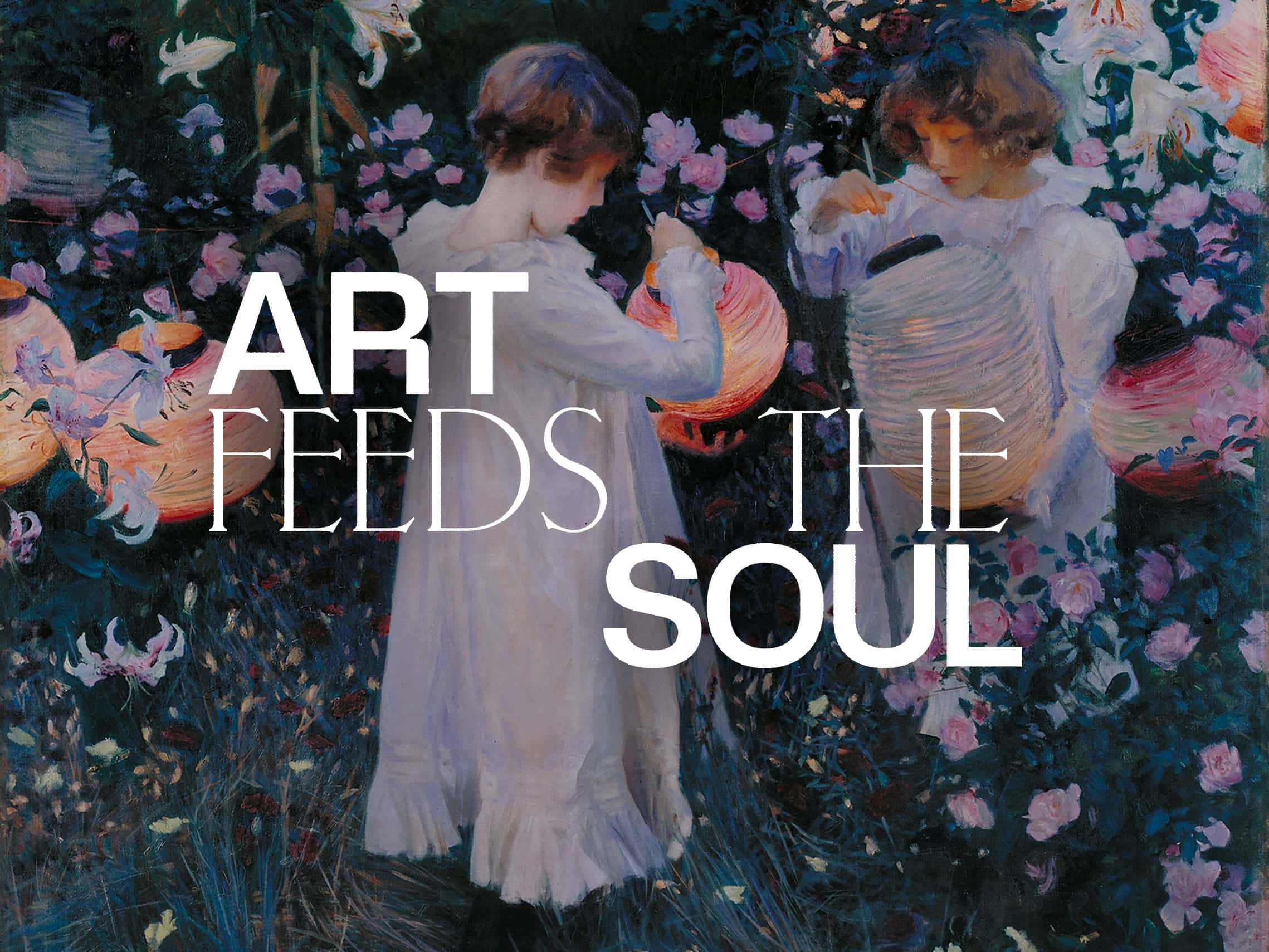

John Singer Sargent, Carnation, Lily, Lily, Rose, 1885–6, Tate
Two fair haired children are lighting Chinese lanterns in a garden, surrounded by flowers. The time is that of a summer’s evening: the attempt has been made to show the conflict of lights between the fading day and the lanterns, and its effect upon the various coloured flowers, carnations, lilies, lily and rose’. Sargent has succeeded in painting a bizarre picture where despite the avowed innocence of its subjects, despite the audacious originality in which he has treated it, is purely and simply beautiful as a picture.
The painting of the children’s figures, the disposition of the masses of flowers with which they are surrounded, the complex lighting, it is a painting that does not settle for one thing or another – it succeeds at them all.
Despite the audacious originality in which he has treated it, it is purely and simply beautiful as a picture
This is where the true emotional face of this piece appears. It is a painting of true, delicate balance. It is an impressionist piece, yet the colours are all realistic. The beauty of colour and the truth of effect are, for perhaps the first time, seamlessly conjoined in one image. Sargent was able to work only for a few minutes each evening while the light was exactly right, which maybe explains its delicate structure – one gets the feeling that if any external force were to enter the entire balance would be changed.
Indeed, from the elevated vantage point that it has been painted from – that of an adult – it is poignantly inaccessible to all but our gaze. At the lower perspective, the grass reaches out to meet our feet – asking us to enter. Yet were we to do so, out adult presence would immediately break the spell.
The beauty of colour and the truth of effect are, for perhaps the first time, seamlessly conjoined in one image
Richard Ormond has written of the painting, ‘Everything breathes that time passes: the youth of the girls, the fragility of the paper laters, the fading light, the flowers in full bloom and on the verge of falling apart and dying.’ This was a painting calculated to appeal to the Victorian affection for sentimental art. It bears witness to Sargent’s command of the sentimental mod and to his understanding of emotional resonance and power. But most interestingly, we truly understand his awareness of his audience’s fondness for this extroverted sentimentality.
This is painting that should extract joy from even the most cantankerously upset person who walks the ancient corridors of the Tate. The fascination for me, though, is that while happiness – whoever that two-faced scoundrel really is – is beautiful at the crux of its balance (this is the single minute where Sargent is painting), it can be upset by just a little push from the outside world (we can imagine Sargent packing up his easel as the sun has gone down and the moment is gone).
We truly understand his awareness of his audience’s fondness for this extroverted sentimentality
This is the thing with joy. Euphoria, just like sunsets, just like drunken celebrations, just like first kisses, are fleeting experiences. But we should be happy to have had them, even for just that one minute.


